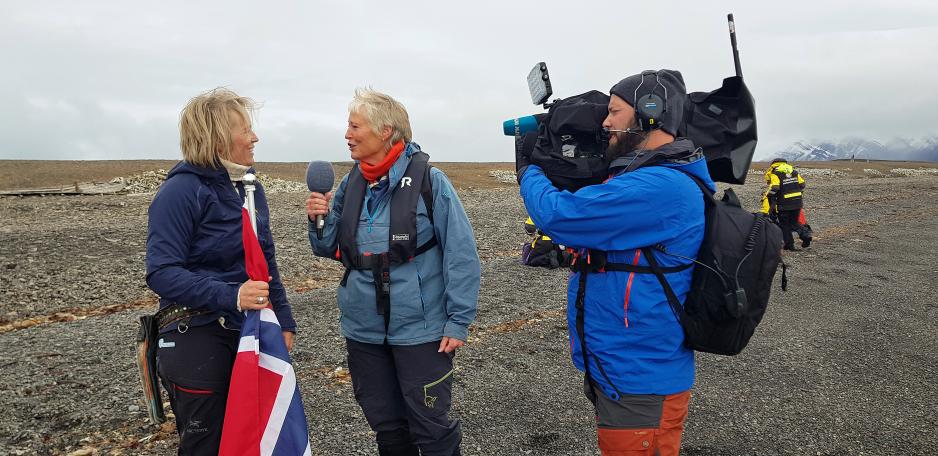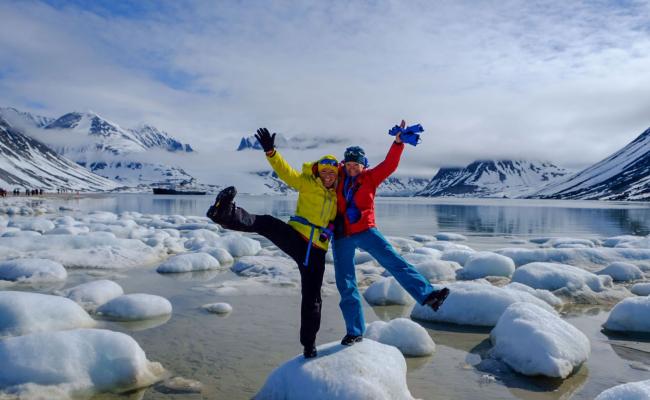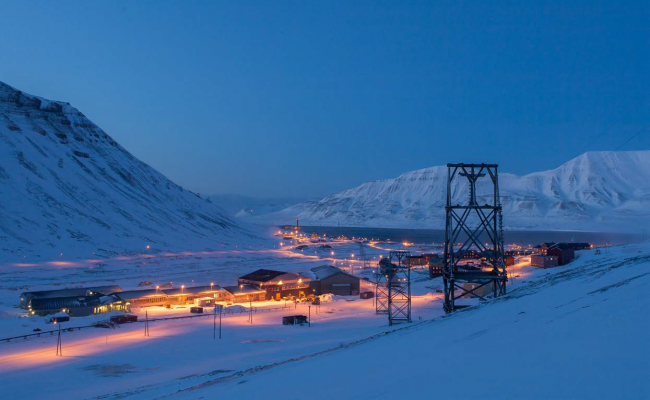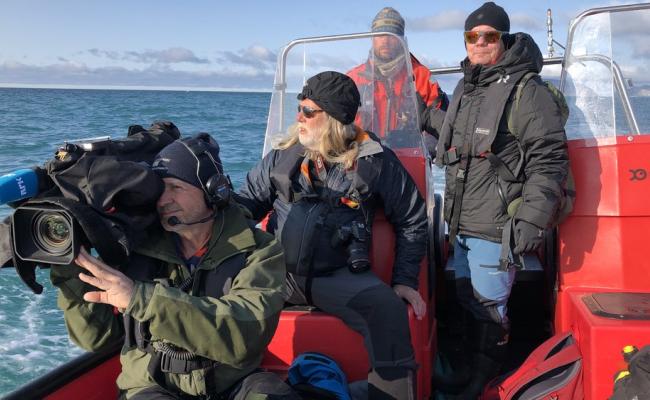A Never-Ending Love Story: The Arctic Equality Ideal

The surviving power of the Svalbard Treaty lies in the very hearts of the people who have chosen a life on Svalbard. Here, Hilde Fålun Srøm meets NRK journalist Kari Toft quite far away from all other human activity. Photo: Arne O. Holm
It must have been way back in 1986, I think, that I entered a ship deck in Longyearbyen for the first time ever. A so-called ‘skårunge’, a rookie, while the rest of the passengers thought I was a sailor, visiting what was to unfold before me as an Arctic paradise. Since then, it never left me. It is a never-ending love story.
Tonight, I go on board again, thanks be to a cultural nation that affords itself a national broadcaster.
13,319 minutes of TV
For nine days and nights I sailed onboard NRK’s floating slow-TV from Svalbard. For a journalist, it is quite an adventure to work with the professional NRK staff, this time as member of a team working round the clock to produce Norway’s longest-lasting TV show. For nine days, 13,319 minutes, cameras capture nature and a fauna only few get to experience.
To me, it was a revisit to a landscape that resembles nothing else I have seen. For six years I lived on Svalbard, for more than 30 years I have been traveling.
The pictures from the voyage will speak for themselves. It is nevertheless imperative to reiterate that parts of Svalbard are inhabited. In various, and at times strange, ways.
Nature will not be directed
The people who have decided to settle down around 78 degrees North play a minor part in the Arctic fauna, and that goes for this massive TV production too. Unlike life on the mainland, they are subject to the order of nature here. Every single one of us is visiting. Some for longer than others, but still just visiting.
Like Hilde Fålun Strøm and Sunniva Sørby, who have chosen to spend a year alone in a tiny cabin far, far away from the nearest neighbor. We meet them while their dream about a year in the wilderness is just that – a dream. We wave at the Poles who endure most things at a research station in Hornsund, and meet with young Russians in Pyramiden, an abandoned Russian mining town that is about to reemerge as a tourist destination. Who would have thought that coffee latte would be served in the old Palace of Culture?
Also read
Nature plays the main role in the TV show, and it does so with clout. In particular because Arctic nature does not take directions, not even by professional NRK staff. If you push your luck, you may end up in a bad place, even a really bad one.
The hearts of humans
The people who, on the last day of broadcast, gather around the old hospital staircase to welcome the return of the sun, know this fully well. It is a rather different experience from the constant darkness that just about now is about to loosen its grip on Longyearbyen
In in the very hearts of the people who have created a good life in Longyearbyen lies the surviving power of the Svalbard Treaty. There are times in the lifetime of the Treaty when the then-privately owned coalmining company Store Norske more or less managed Norwegian sovereignty on its own. There are memories of a war so cold that contacts between authorities in Longyearbyen and Barentsburg were one out of very few open channels between the East and the West. That is how it had to be in a time when not only the political climate was frozen, but the Arctic climate, too, was colder than what people face today when the descend from their plane in Longyearbyen.
Sentenced to death
The TV program provides insight into this too. I found both islets and rocks, even something that could be referred to as islands, in places where there used to be glaciers. My own snowmobile tracks, or dogsled tracks, have thawed once and for all. Sentenced to death by climate changes.
Also read
Most things in Svalbard are unique. And as we mark the 100th anniversary for the signatures of the Svalbard Treaty, the Treaty’s inviting and inclusive character may be the most remarkable aspect of a world in which borders are closed rather than opened.
“With regard to methods of acquisition, enjoyment and exercise of the right of ownership of property (…) Norway undertakes to grant to all nationals of the High Contracting Parties treatment based on complete equality (…)” says the Treaty’s article 7.
Surviving thought about equality
To find a surviving thought about equality in international agreements is getting harder than finding gold among grey pebbles. The tune of our time sings of increasingly restrictive border measures, sanctions and threats.
The Arctic ideal as codified in the Svalbard Treaty is not in any way void of problems; however, it rests on Norway as a nation to keep this principle high for the next century too. If not for anything else, then at least for a stubborn demonstration of there having been a world before presidents and others placed their own gain and power before international solidarity and cooperation.
Let that be the backdrop now that we hoist the ropes and leave Longyearbyen behind tonight.
Bon voyage, and have a great weekend!




